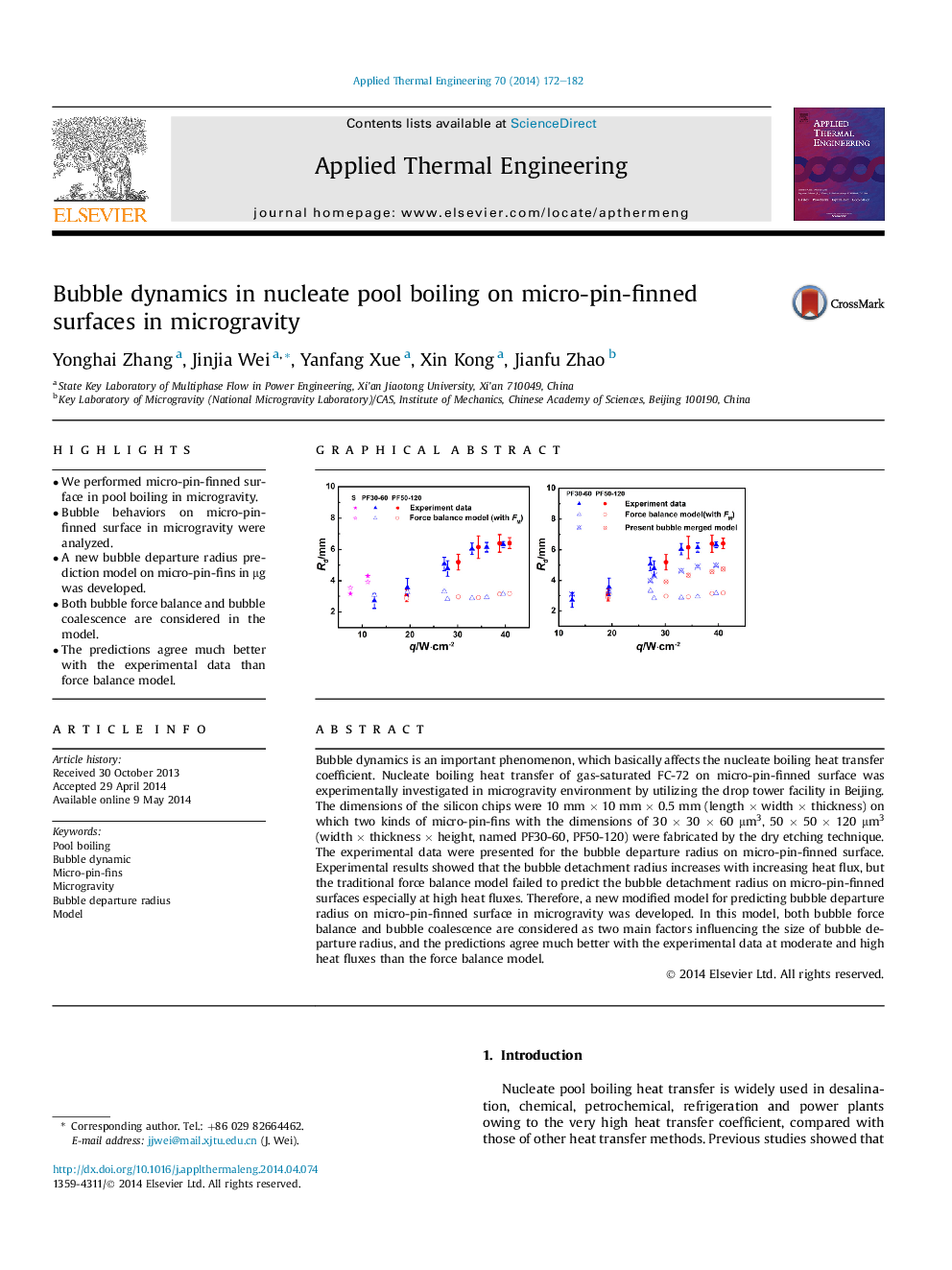| Article ID | Journal | Published Year | Pages | File Type |
|---|---|---|---|---|
| 646260 | Applied Thermal Engineering | 2014 | 11 Pages |
•We performed micro-pin-finned surface in pool boiling in microgravity.•Bubble behaviors on micro-pin-finned surface in microgravity were analyzed.•A new bubble departure radius prediction model on micro-pin-fins in μg was developed.•Both bubble force balance and bubble coalescence are considered in the model.•The predictions agree much better with the experimental data than force balance model.
Bubble dynamics is an important phenomenon, which basically affects the nucleate boiling heat transfer coefficient. Nucleate boiling heat transfer of gas-saturated FC-72 on micro-pin-finned surface was experimentally investigated in microgravity environment by utilizing the drop tower facility in Beijing. The dimensions of the silicon chips were 10 mm × 10 mm × 0.5 mm (length × width × thickness) on which two kinds of micro-pin-fins with the dimensions of 30 × 30 × 60 μm3, 50 × 50 × 120 μm3 (width × thickness × height, named PF30-60, PF50-120) were fabricated by the dry etching technique. The experimental data were presented for the bubble departure radius on micro-pin-finned surface. Experimental results showed that the bubble detachment radius increases with increasing heat flux, but the traditional force balance model failed to predict the bubble detachment radius on micro-pin-finned surfaces especially at high heat fluxes. Therefore, a new modified model for predicting bubble departure radius on micro-pin-finned surface in microgravity was developed. In this model, both bubble force balance and bubble coalescence are considered as two main factors influencing the size of bubble departure radius, and the predictions agree much better with the experimental data at moderate and high heat fluxes than the force balance model.
Graphical abstractNucleate boiling heat transfer of gas-saturated FC-72 on micro-pin-finned surface was experimentally investigated in microgravity by utilizing the drop tower facility in Beijing. Experimental results showed that the bubble detachment radius increases with increasing heat flux, but the traditional force balance model failed to predict the bubble detachment radius on micro-pin-finned surfaces especially at high heat fluxes. Therefore, a new modified model for predicting bubble departure radius on micro-pin-finned surface in microgravity was developed. In this model, both bubble force balance and bubble coalescence are considered as two main factors influencing the size of bubble departure radius, and the predictions agree much better with the experimental data at moderate and high heat fluxes than the force balance model.Figure optionsDownload full-size imageDownload as PowerPoint slide
